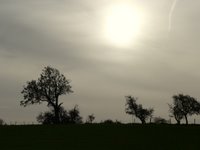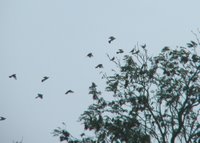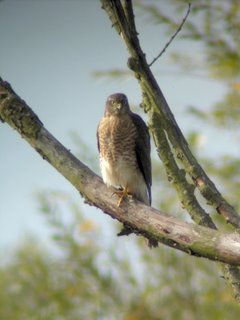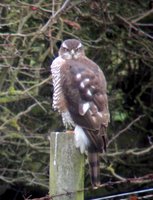 I have just enjoyed a beautiful morning walking around the fields near Radford Semele.
I have just enjoyed a beautiful morning walking around the fields near Radford Semele.The hedgerows, fields and skies were full of finches, buntings, gulls, crows, thrushes and plenty more besides as a low pale sun battled to break through.
Early highlights included a Goldcrest in my garden and then a female Bullfinch and a couple of Reed Buntings not far away. At the pond I found a couple of Mallards plus a Moorhen, but it was as I started to walk up towards Crown Hill that things got very interesting indeed.
First one, then half a dozen then perhaps 50 or more Sky Lark flew over in small and not-so-small groups - at one point I counted 30 in the air at once. This would make it easily the largest Sky Lark count I have made here or indeed anywhere else.


At the bottom of the hill I had seen 19 Fieldfare fly overhead, but at the top I was confronted with in excess of 160 of them, some feeding on the ground must most flitting from tree to tree in large groups. Again, this is a pretty decent number to find at any time.
On the way back down the hill I counted perhaps a dozen Yellowhammers, a few Redwing, more than a dozen Meadow Pipits and a solitary Common Gull (a sure sign that winter is in Radford Semele).

